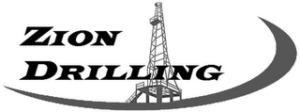Press Release: November 29 – Zion Oil & Gas Plans Going Forward
Zion Oil & Gas Plans Going Forward
DALLAS and CAESAREA, Israel, November 29, 2018 – Zion Oil & Gas, Inc. (NASDAQ: ZN) announces that it is completing the final phase of plugging the Megiddo Jezreel #1 (MJ#1) well in accordance with the wishes of various Israeli government ministries to allow for re-entry for future water monitoring.
The vision of Zion Oil & Gas remains to help Israel become energy independent, and in doing so, use our projects as a platform to share the gospel of Jesus Christ. That vision has not changed, and while the MJ#1 was determined to be non-commercial, we believe it was a meaningful and impactful project and one which we believe justifies further exploration efforts within our license area.
The MJ#1 well has provided Zion with information that we believe is important for potential future exploration efforts within our license area. As with many frontier wildcat wells, the MJ#1 also left several questions unanswered.
While not meant to be an exhaustive list, a summary of what Zion believes to be key information learned in the MJ#1 well is as follows:
- The MJ#1 encountered much higher subsurface temperatures at a depth shallower than expected before drilling the well. In our opinion, this is significant because reaching a minimum temperature threshold is necessary for the generation of hydrocarbons from an organic-rich source rock.
- The known organic rich (potentially hydrocarbon bearing) Senonian age source rocks that are typically present in this part of Israel were not encountered as expected. Zion expected these source rocks to be encountered at approximately 1,000 meters in the MJ#1 well.
- MJ#1 had natural fractures, permeability (the ability of fluid to move through the rock) and porosity (pore space in rock) that allowed the sustained flow of formation fluid in the shallower Jurassic and lower Cretaceous age formations between approximately 1,200 and 1,800 meters. While no hydrocarbons were encountered, Zion believes this fact is nonetheless significant because it provides important information about possible reservoir pressures and the ability of fluids to move within the formation and to the surface.
- MJ#1 encountered oil in the Triassic Mohilla formation which Zion believes suggests an active deep petroleum system is in our license area. There was no natural permeability or porosity in the Triassic Mohilla formation to allow formation fluid to reach the surface naturally during testing and thus the MJ#1 well was not producible or commercial.
- The depths and thickness of the formations we encountered varied greatly from pre-drill estimates. This required the MJ#1 to be drilled to a much greater depth than previously expected. Zion has tied these revised formation depths to our seismic data which will allow for more accurate interpretation and mapping in the future.
A summary of what Zion believes to be some key questions left to be answered are:
- Is the missing shallow Senonian age source rock a result of regional erosion, or is it missing because of a fault that cut the well-bore and could be reasonably expected to be encountered in the vicinity of the MJ#1 drill site? Zion believes this is an important question to answer because if the Senonian source rocks do exist in this area, the high temperatures encountered are sufficient to mature these source rocks and generate oil.
- Do the unusually high shallow subsurface temperatures extend regionally beyond the MJ#1 well, which could allow for the generation of hydrocarbons in the Senonian age source rock within our license area?
- As a consequence of seismic remapping, where does the MJ#1 well lie relative to the potential traps at the Jurassic and Triassic levels and was the well location too low on the structures and deeper than the potential hydrocarbons within those traps?
As a result of these unanswered questions and with the information gained drilling the MJ#1 well, Zion now believes it is prudent and consistent with good industry practice to try and answer some of these questions with a focused 3D seismic imaging shoot of approximately 50 square kilometers surrounding the MJ#1 well.
If undertaken, this will not be a short-term exploratory project with immediate results, and it is one for which Zion will need to raise additional funding, the success of which is not assured. A realistic timeframe in which Zion can reasonably expect to complete this project would be six to twelve months (following a successful raise) to plan the survey design or layout, identify and obtain the necessary equipment which will likely have to be imported, receive the necessary permits, negotiate potential surface damages, and acquire the data. An interpretation effort would follow the seismic acquisition. We intend to proceed soon with a new unit program to try and raise the needed funds for this and will provide details concerning unit program limits, parameters, use of proceeds, and other pertinent information.
Zion recognizes the financial and time commitment that our shareholders have made in supporting us and its need for additional funding to undertake these efforts. As noted, there are a number of questions Zion believes need to be further explored. While there is no guarantee that these exploration efforts will lead to commercial success, Zion takes its responsibility to its shareholders very seriously.
Zion expresses appreciation for the continued support of their shareholders and considers it an honor to represent them.
Deuteronomy 31:8
1 Corinthians 2:5






. . . oils well that ends well !!
Trust in the Lord with all your heart and lean not to your own understanding.
We do not follow man, we follow God. We did not invest in Zion Oil because of the advertisements of Zion, we invested because of a dream God gave me. A dream of a project that would bless Israel and in return bless others, was what brought us to Zion. No man. In this dream God said find “the Joseph Project” which is what we did. Along with our heart being connected with Israel, this was exactly where God wanted us. But our ways are not God’s ways, nor our thoughts His thoughts. His shaking of this tree may just be His way of removing people or things that He does not want to partake in the table. My heart goes out to John Brown. He is leading the charge to help Israel, along with helping others. Many will ride on his coat tail to victory. What we may think of as a set back, in God’s eyes may very well be a step closer to victory. Joseph would not have made it to the castle without first being in the well. Our faith does not stand on a man, it stands on what God has said to do. And this thing is still a God thing. Time is not the factor. Obedience is the factor. And right now, in this time and place, God is God. The I AM has not left His Word, nor taken His people somewhere to be left. May every step you take be blessed, surrounded by protection. May those that rise up against you be put down. May God grant you a supernatural peace, vision that others will not perish. God is with you, stay strong, Be courageous.
Ron and KathySwails:
What an encouragement your dream is to those of us who believe we also were lead to invest in the John Brown vision. I agree that the shaking has been necessary…and God will honor those of us who stand firm on His promises. Thank you for sharing your faith in The Joseph project.
We still have faith and are we you. Born and raised in south Texas. My father was a Tool Pusher in the oilfield and my previous husband was in the oilfieldd. I pray you guys tap into the oil in Israel. Praise the Lard.
Gen 26 :19-22 we see issaic dig a well
And had to let it go.
And he dug another and had strife because of it as well.
Then he dug another. And God made place for him there.
Vs23. God visited him in that place.
Sometimes we have to contend for the faith we desire to achieve. A great resourse will take striving. ( work ). Don’t give up. Trust that God is with you. Keep pressing in
I only have 90 shares invested, but I believe, being a son of a pastor, learning more about the Lord. The oil might be in an area that will confound the experts, a place, that would totally be a wonder of God.
Even the disciples fished catching nothing, then Jesus told them try the other side of the boat.
Your in the perfect land where that has happened before, and God will do it again. Rest in the Lord.
God has filled oil pots before, he will do it again.
Do you have the money to keep drilling?
We’ve been able to move forward for 18 years so far. We believe that we will keep at it as long as our investors want us to. If you look at our latest PRs, you will see we are looking to further qualify the latest drilling through 3-D seismic.
The findings are very interesting. It reminds me of a vision I received in the summer of 2016. I saw oil flow out from cracks in the rock. Message from an investor in the UK.
I’m still with ya, just wish we would’ve done the 3D siesmic first. We are gonna be alright. Probably lost a lot of not so faithful investors though. Let us know when you find the crew, we’ll go from there. Have a Safe and Blessed day.😊
Larger oil and gas exploration companies may choose to conduct extensive analytical pre-drilling testing such as 3-D seismic imaging, the drilling of an expendable “pilot” well or “stratigraphic test” to collect data (logs, cores, fluid samples, pressure data) to determine if drilling a well capable of producing oil or gas (full completion with casing and well testing) is justified. The use of pilot or stratigraphic tests is often used in areas where there is little or no offset well data, like Israel, where our exploration license area is located.
While 3-D seismic imaging data is more useful than 2-D data in identifying potential new drilling prospects, its acquisition, and processing costs are many multiples greater than that for 2-D data, and the Geophysical Institute of Israel (“GII”), our primary provider of geophysical data, has limited ability to acquire and process onshore 3-D data in Israel.
In addition to using 2-D seismic technology prior to drilling, we have historically also utilized gravity and magnetic data, built cross-section maps from offset wells and utilized geophysical analysis from similar geologic targets. We believe that the additional months, delays and costs associated with more extensive pre-drilling testing typically undertaken by larger oil and gas exploration companies is not necessarily justified when drilling vertical or near-vertical exploration wells (as we have historically been doing).
Nonetheless, the absence of more extensive pre-drilling testing may potentially increase the risk of drilling a non-producing well, which would, in turn, result in increased costs and expenses. Additionally, we are typically engaged in drilling deep onshore wildcat wells in Israel where only approximately 500 total wells have ever been drilled, the vast majority of which are relatively shallow. As such, exploration risks are inherently very substantial.
Remember that God is willing to help, but we need to listen to His voice through His Son Jesus Christ.